If you’re reading this, chances are you’re already part of the creative community that relies heavily on Apple hardware. For decades, the Mac has been the undisputed champion in the design studio, and while PC options have improved dramatically, the seamless integration, color accuracy, and sheer reliability of macOS remain unparalleled for professional designers.
But choosing the best graphic design Mac today is far more complex than it used to be. We’re no longer just comparing the MacBook Pro and the iMac. We now have the revolutionary Apple Silicon chips (M1, M2, and M3 series), the powerful Mac Studio, and the surprisingly capable MacBook Air.
As an expert who has guided countless professionals through this exact decision, I want to cut through the marketing noise and give you a practical, in-depth look at what specs truly matter for your design workflow. Whether you’re a freelance illustrator juggling massive Procreate files, or an agency art director running Adobe Creative Suite simultaneously, finding the best mac computer for graphic design means understanding the delicate balance between CPU power, unified memory, and port selection.
Let’s dive into the details and find the perfect machine to power your creativity.
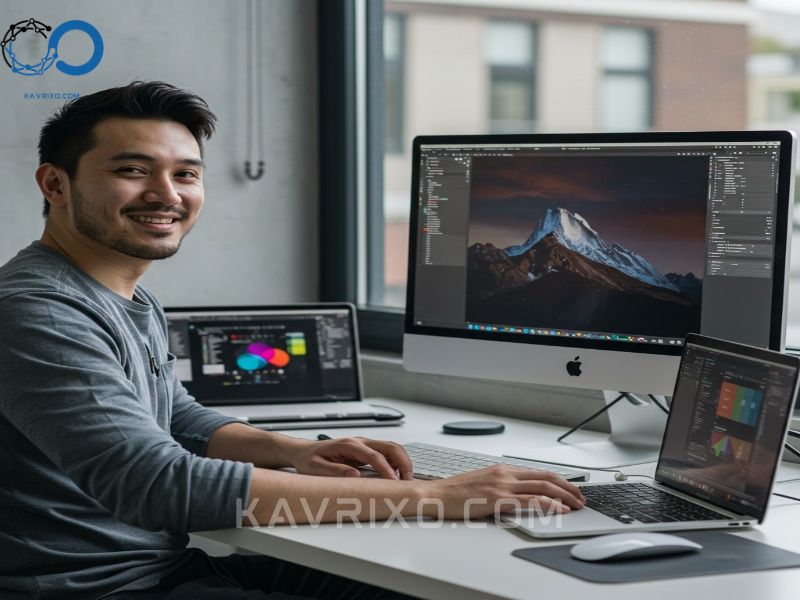
Contents
- 1 Understanding the Core Needs of a Graphic Designer
- 2 Comparing the Contenders: Which Mac Fits Your Workflow?
- 3 Deep Dive into Specifications for the Professional Designer
- 4 Workflow Scenarios: Matching the Mac to Your Job Role
- 5 Critical Considerations Beyond Raw Power
- 6 Final Verdict on the Best Graphic Design Mac
Understanding the Core Needs of a Graphic Designer
Before we look at specific models, we need to establish the baseline requirements for graphic design hardware. Unlike simple word processing or web browsing, graphic design involves constant heavy lifting: rasterizing large images, rendering complex vectors, handling large color spaces, and managing dozens of open files and applications simultaneously.
When searching for the best graphic design Mac, we must prioritize four key areas: processing power, unified memory (RAM), fast storage, and display quality.
The CPU/GPU Revolution: Apple Silicon (M-series Chips)
The move from Intel to Apple Silicon has fundamentally changed how Macs handle creative workloads. The M-series chips (M1, M2, M3, and their Pro and Max variants) integrate the Central Processing Unit (CPU), Graphics Processing Unit (GPU), and Neural Engine onto a single chip, utilizing Unified Memory. This architecture allows data to be accessed almost instantaneously by all components, resulting in blazing-fast performance, especially in Adobe Photoshop, Illustrator, and InDesign.
For graphic design specifically, the GPU cores are vital for handling tasks like zooming smoothly on huge canvases, applying complex filters, and rendering effects in real-time.
- M3 (Standard): Excellent for entry-level or student work, perfect for 2D design and smaller projects.
- M3 Pro: The sweet spot for most professional designers. It offers significantly more GPU cores and memory bandwidth, enabling smooth multitasking with large files and multiple design apps open.
- M3 Max: Necessary only if your workflow extends into heavy 3D rendering, video editing (4K/8K), or motion graphics, where sustained high performance is critical.
RAM: The Multitasking Lifeline (Unified Memory)
This is arguably the most common mistake buyers make: underestimating the need for RAM. When you are running Photoshop (which is a notorious RAM hog), Illustrator, Chrome (with 40 tabs, we’ve all been there), and Spotify, your system needs memory to swap data rapidly.
Apple refers to this as Unified Memory, and while 8GB is often advertised as “enough” for basic tasks, I strongly recommend 16GB as the absolute minimum for any serious graphic designer.
Why? Because Apple Silicon handles memory incredibly efficiently, 16GB of Unified Memory performs closer to 24-32GB of traditional Intel RAM. However, if you are working with extremely large print files (A1 size), multi-layer files over 5GB, or integrating motion graphics into your workflow, 32GB or even 64GB is a wise investment to future-proof your best mac computer for graphic design. Remember: you cannot upgrade Unified Memory later, so buy what you need now.
Storage: Speed (SSD) and Capacity
While you can always use external drives for archiving, the internal Solid State Drive (SSD) speed is crucial. Your Mac uses the SSD as “scratch disk” space when RAM runs out, so a slow drive will bottleneck your entire workflow. Fortunately, all modern Macs come with incredibly fast SSDs.
The real question is capacity.
- 512GB: The absolute minimum. If you rely heavily on cloud storage (Dropbox, Google Drive) and external drives for project archives, this can suffice.
- 1TB: The recommended starting point for professionals. This gives you ample space for current projects, application libraries, and allows the macOS system to function optimally without running out of scratch space space.
- 2TB+: Essential for designers who handle large video assets, photography libraries (Lightroom), or keep extensive portfolios locally.
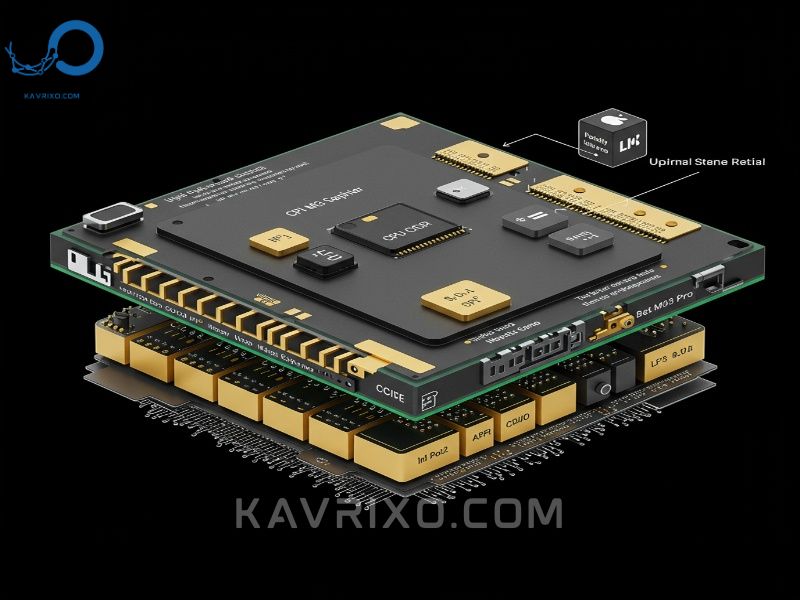
Display Quality: Color Accuracy is King
What good is a beautiful design if the colors look wrong on the client’s screen? For graphic designers, color accuracy is non-negotiable.
The displays on MacBook Pros (Liquid Retina XDR) and the Mac Studio/Mac Mini paired with a high-end external monitor (like the Studio Display or a third-party calibrated screen) offer P3 wide color gamut support. This means they can display millions more colors than standard sRGB displays, which is essential for print production and high-end digital work.
When choosing your best graphic design Mac, always prioritize a screen that supports 100% DCI-P3 color accuracy and offers high brightness and contrast ratios (Mini-LED technology is fantastic here).
Comparing the Contenders: Which Mac Fits Your Workflow?
Now that we understand the specs, let’s look at the current line-up and determine which model offers the best blend of power and portability for your specific needs.
The Mobile Powerhouse: MacBook Pro (14-inch and 16-inch)
For the vast majority of professional graphic designers, the MacBook Pro is the best graphic design mac available today. It perfectly balances raw desktop-class power with unparalleled portability.
MacBook Pro 14-inch (M3 Pro/Max)
This is the sweet spot for many creative professionals. The 14-inch model is highly portable but still includes the high-resolution Liquid Retina XDR display, crucial for color-critical work.
- Ideal Configuration: M3 Pro Chip, 32GB Unified Memory, 1TB SSD.
- Why it shines: It handles massive multi-application workloads with ease, provides exceptional battery life (meaning you can work tether-free at client meetings), and the display quality is fantastic right out of the box. I find the 14-inch screen size is generally large enough for primary design work, especially if you dock it to a larger monitor at your home office.
MacBook Pro 16-inch (M3 Pro/Max)
If screen real estate is your biggest concern, or if you regularly travel and cannot rely on an external monitor, the 16-inch model is superior. It often allows for slightly better thermal performance due to its larger chassis, which is beneficial if you are running computationally intensive tasks for long periods.
- Best for: Designers who integrate video editing or motion graphics (After Effects) heavily into their workflow, as the larger screen aids timeline management. Opting for the M3 Max chip here provides maximum future-proofing.
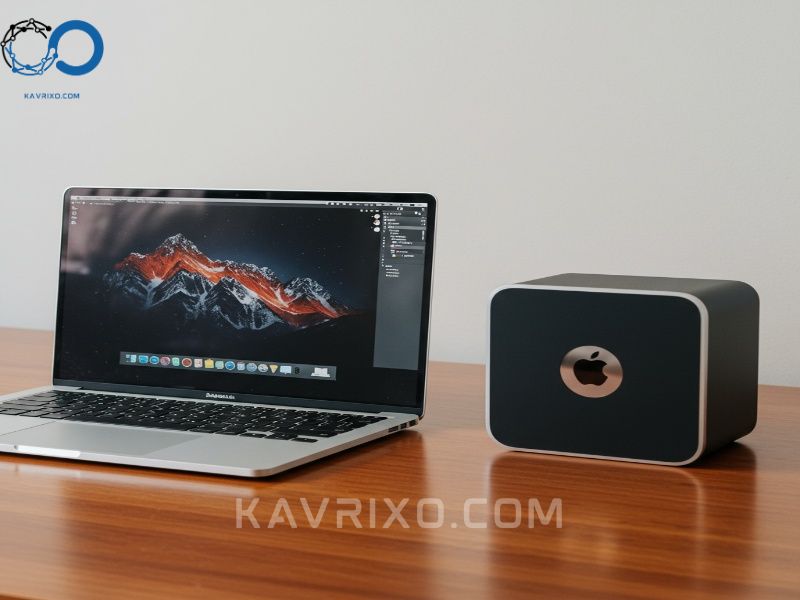
The Desktop Workhorse: Mac Studio
If you work exclusively from a dedicated studio or home office and need maximum performance without regard for portability, the Mac Studio is the ultimate choice.
The Mac Studio is essentially a highly scalable, cooling-optimized version of the MacBook Pro’s internal hardware, allowing it to house the most powerful M-series chips (Ultra configurations).
- Ideal Configuration: M2/M3 Max or M2/M3 Ultra, 64GB Unified Memory, 2TB SSD.
- Why it shines: It allows for connection to multiple 4K or 5K displays, offers a robust array of ports (including front-facing ones for easy access), and its thermal management system ensures peak performance even during hours of heavy rendering. If your work involves large-scale 3D modeling, high-resolution texture mapping, or complex augmented reality design, the Mac Studio delivers the sheer horsepower you need. It is truly the best mac computer for graphic design when budget isn’t the primary constraint and performance is paramount.
The All-in-One Classic: 24-inch iMac
The iMac is beautiful, space-saving, and offers a fantastic 4.5K display built right in. It’s perfect for the student, the hobbyist, or the designer who runs a small business and primarily focuses on web design, branding, and basic print materials.
- Ideal Configuration: M3 Chip (upgraded GPU cores), 16GB Unified Memory, 1TB SSD.
- The Caveat: The iMac is currently limited to the standard M3 chip (no Pro or Max variants). While the M3 is powerful, it lacks the memory bandwidth and core count necessary for professional designers constantly pushing massive files through the Adobe Creative Suite. If you need 32GB of RAM or higher, the iMac is simply not an option.
The Entry Point: MacBook Air and Mac Mini
Can you do graphic design on a MacBook Air or Mac Mini? Absolutely! But with some limitations.
- MacBook Air (M2/M3): Excellent for portability and light design tasks (social media graphics, basic web mockups). If you prioritize battery life and thinness, and your files are generally small, this is a phenomenal machine. However, always opt for the 16GB RAM upgrade.
- Mac Mini (M2/M3): The best budget entry point into the macOS ecosystem for graphic designers. Paired with a high-quality external monitor, the Mac Mini offers incredible value. Again, spring for the 16GB RAM upgrade. It is the best graphic design Mac for those on a tight budget who don’t need portability.
Deep Dive into Specifications for the Professional Designer
When you are investing thousands into a professional tool, understanding why certain upgrades are necessary is critical. Let’s break down the technical differences that directly impact your daily efficiency.
Processor Selection: M3, M3 Pro, or M3 Max?
The choice here dictates the ceiling of your machine’s capability.
- M3 (Standard): Features a balanced CPU/GPU and supports up to 24GB of Unified Memory. Best for: Single-application focus, entry-level professionals.
- M3 Pro: Features significantly more dedicated performance cores (for CPU tasks) and a much higher number of GPU cores. It also supports up to 36GB of Unified Memory and has increased memory bandwidth. Best for: Seamless multi-app multitasking, layer-heavy Photoshop work, and standard agency environments. This is where most professionals should aim.
- M3 Max: This chip is designed for memory bandwidth and sheer graphical throughput. It supports up to 128GB of Unified Memory and has an enormous GPU core count. Best for: High-end rendering, complex 3D modeling (Blender, Cinema 4D), and simultaneous 4K/8K video editing alongside complex graphic work. If you constantly feel bogged down by rendering times, the Max chip is your solution.
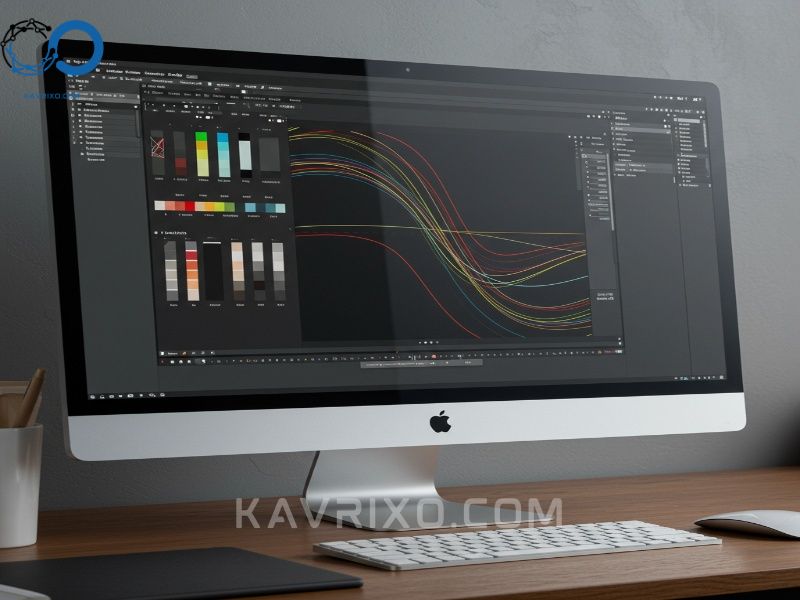
Unified Memory Explained: Why Apple RAM is Different
In older systems, the CPU and GPU had separate pools of memory (RAM and VRAM). Apple Silicon uses Unified Memory, meaning the CPU and GPU share the same lightning-fast memory pool.
This shared architecture dramatically reduces latency when data needs to move between the processor and the graphics card—a constant occurrence in design software. This is why 16GB of Apple Unified Memory often feels faster than 32GB of older, discrete RAM.
However, since this memory is shared, if you opt for only 16GB, you must understand that the GPU will reserve a portion of that for graphical tasks (VRAM), leaving less available for the CPU (application data). This is why upgrading to 32GB is often the most impactful upgrade you can make for a professional best mac computer for graphic design. It ensures both the CPU and GPU have ample, dedicated space to run simultaneously without bottlenecks.
Ports and Connectivity: Adapters vs. Built-in Utility
This is a practical consideration often overlooked. While Thunderbolt/USB-C is incredibly versatile, designers still rely on legacy connections and card readers.
- MacBook Pro: Includes dedicated HDMI, an SDXC card slot (a lifesaver for photographers and designers handling camera assets), and three Thunderbolt ports. This vastly reduces the need for cumbersome dongles.
- Mac Studio: Offers the most comprehensive I/O, including multiple USB-A ports, Thunderbolt ports, and front-facing SD card slots and USB-C ports, making connecting external drives and peripherals seamless.
- Mac Mini/iMac/MacBook Air: Rely heavily on Thunderbolt ports, meaning you will almost certainly need a dock or dongle for things like external monitors, USB-A devices, and SD cards.
Workflow Scenarios: Matching the Mac to Your Job Role
The best graphic design mac isn’t a one-size-fits-all answer; it depends entirely on how and where you work.
The Freelancer/Hybrid Designer
You need flexibility, power for client revisions, and long battery life for coffee shop work. Your primary tools are Photoshop, Illustrator, and Figma.
- Recommendation: MacBook Pro 14-inch (M3 Pro, 32GB RAM, 1TB SSD).
- Why: This configuration offers the perfect balance. The M3 Pro chip ensures you never wait for filters to apply or files to save, and the 32GB of RAM guarantees you can run large applications and multiple virtual desktops without slowdowns. The 14-inch form factor is ideal for travel.
The Agency Power User (3D/Video Integration)
You are the lead designer, working with massive files, integrating 3D assets, handling high-resolution video clips for social campaigns, and potentially managing complex color grading pipelines. Sustained performance is paramount.
- Recommendation: Mac Studio (M3 Max/Ultra, 64GB+ RAM, 2TB SSD) paired with a high-end calibrated display.
- Why: The Mac Studio provides the thermal headroom and the sheer core count of the Max/Ultra chips needed to crunch data for hours without throttling. If portability is occasionally required, the MacBook Pro 16-inch (M3 Max, 64GB RAM) is the mobile equivalent.
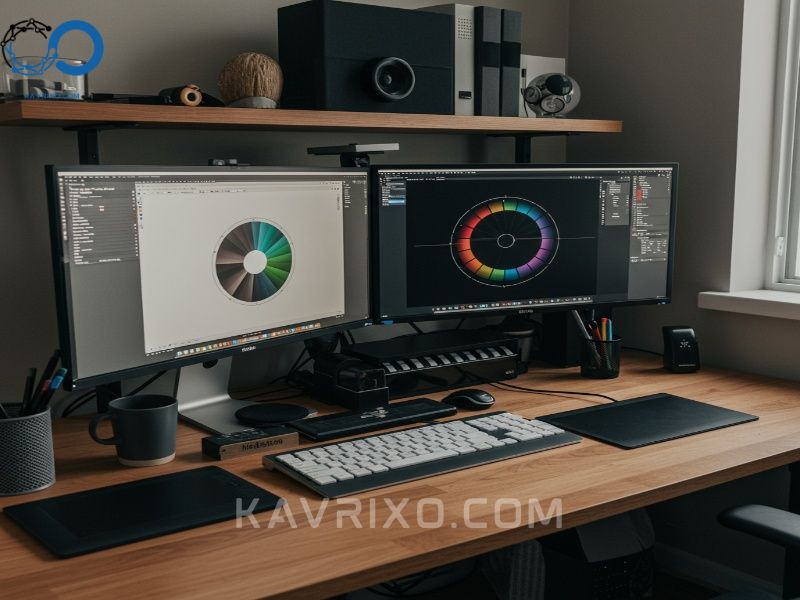
The Student/Budget-Conscious Creator
You are learning the ropes, handling smaller projects, and need a reliable machine that will last through four years of college. Budget is a major constraint.
- Recommendation: Mac Mini (M2/M3, 16GB RAM, 512GB SSD) or MacBook Air (M3, 16GB RAM, 512GB SSD).
- Why: Both options offer the incredible efficiency of Apple Silicon at a fraction of the cost of the Pro line. Crucially, prioritizing the 16GB RAM upgrade over a faster processor will yield better real-world performance for general graphic design tasks, as it prevents slow-downs caused by memory swapping.
Critical Considerations Beyond Raw Power
While specs are important, the long-term usability of your best graphic design Mac depends on a few non-technical factors.
Ergonomics and Peripheral Compatibility
A MacBook Pro’s screen is excellent, but for eight hours a day, your neck will thank you for investing in an external monitor and a dedicated keyboard/mouse setup.
When choosing a desktop option (Mac Studio or Mac Mini), budget carefully for peripherals. A high-quality, color-accurate monitor (Eizo, Dell Ultrasharp, or Apple Studio Display) can cost as much as the entry-level Mac itself, but it is a necessary investment for professional color work.
Also, consider input devices. Many designers rely on Wacom tablets or the Apple Pencil with an iPad (Sidecar feature) for illustration and detailed retouching, making the overall ecosystem integration a key benefit of choosing a Mac.
Longevity and Future-Proofing
We touched on this earlier, but it deserves emphasis: Apple Silicon Macs have a longer useful lifespan than their Intel predecessors due to their highly optimized architecture.
When deciding on upgrades, think about your workflow three to five years down the line. Will you be incorporating more 3D? Will file sizes continue to balloon?
I always tell designers to invest in RAM and the Pro/Max chip before upgrading storage, as external storage is cheap, but internal components are locked forever. A higher-tier processor and more unified memory will ensure your chosen best graphic design mac can handle the constantly evolving demands of creative software updates.

Final Verdict on the Best Graphic Design Mac
Choosing the right machine is a significant investment, but it’s one that will directly impact your speed, reliability, and ultimately, your earning potential.
If you are a professional designer working on client projects daily, the choice is clear:
The overall best graphic design Mac for 90% of professionals is the 14-inch MacBook Pro configured with the M3 Pro chip and 32GB of Unified Memory.
This machine provides the perfect synergy of portability, a professional-grade display, and the horsepower needed to tackle even the most demanding multitasking scenarios.
If your budget is tighter, or if you are purely desk-bound, the Mac Mini with 16GB of RAM offers unbeatable value.
Ultimately, your best mac computer for graphic design is the one that allows you to stop worrying about lag and start focusing entirely on creating stunning work. Invest wisely in memory and processing power, and your new Mac will serve as a powerful foundation for years of successful design projects.

Pingback: Choosing the Best Laptop for Adobe Creative Cloud: An Expert's Comprehensive Guide - Kavrixo Blog